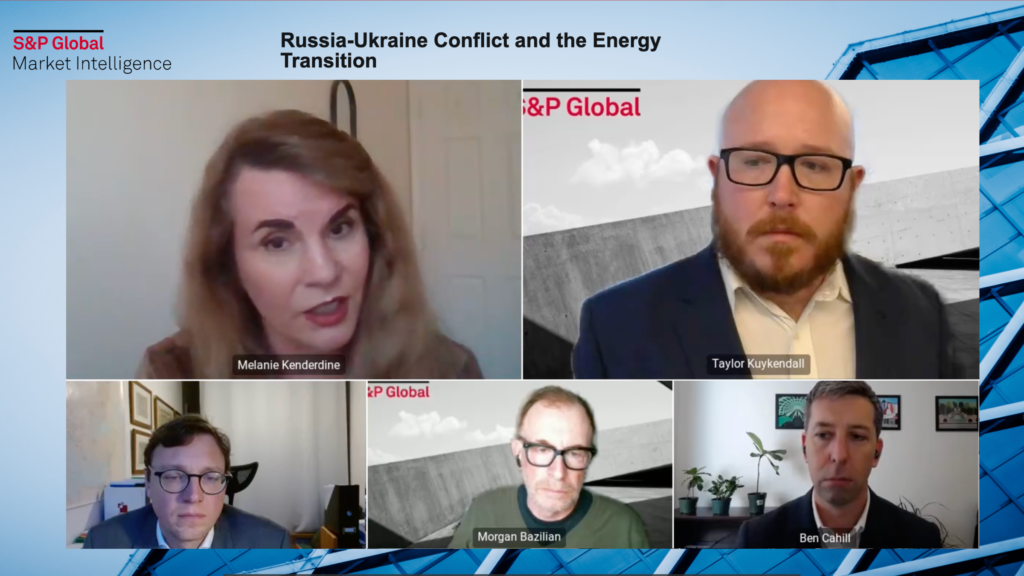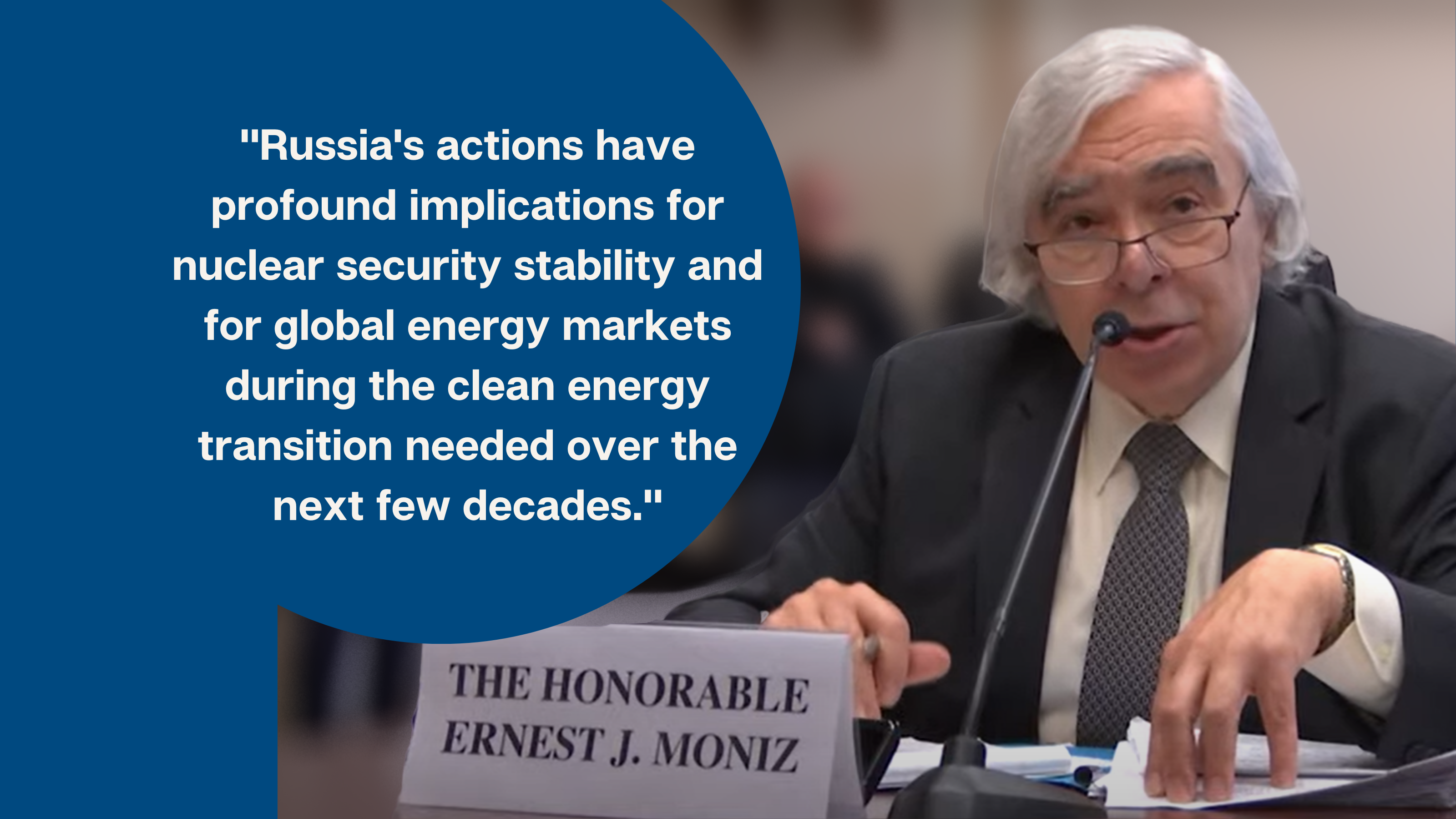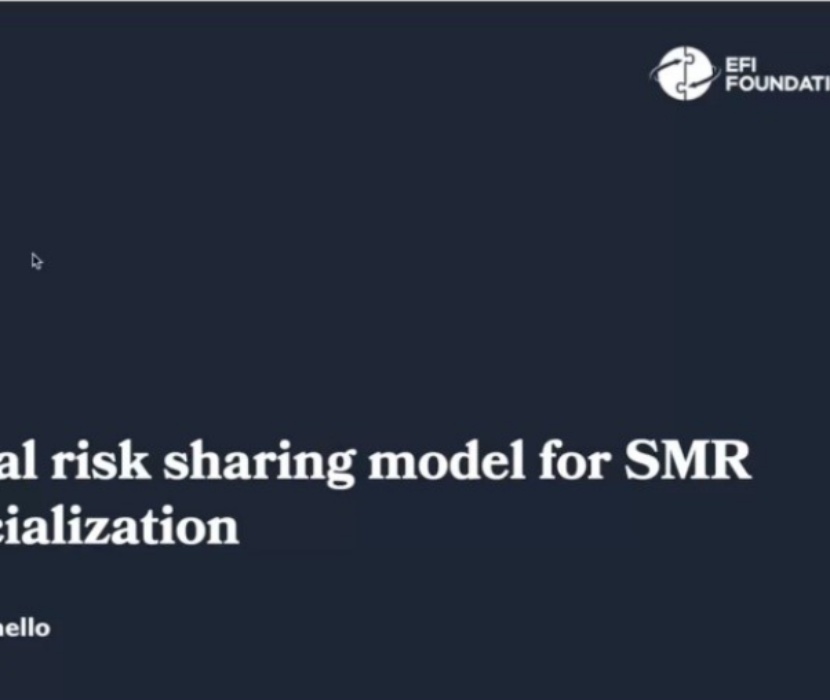
Russia launched a full-scale invasion of Ukraine on February 24, 2022. A year later, the war continues and so does its impact on the energy space.
Energy Futures Initiative (EFI) Principal Melanie Kenderdine discussed the status of the energy transition amidst the Russia-Ukraine conflict during a S&P Global Market Intelligence webinar on February 21, 2023. She was joined by experts specializing in metals, mining, and other energy topics: Georg Zachmann (senior fellow at Bruegel), Morgan Bazillian (director of the Payne Institute and professor at the Colorado School of Mines), Ben Cahill (senior fellow for the Energy Security and Climate Change Program at the Center for Strategic and International Studies), and moderator Taylor Kuykendall (senior reporter at S&P Global Commodities Insights).
Kenderdine set the stage by clarifying the context of the Russian invasion of Ukraine.
“Russia really started its invasion of Ukraine in 2014 when it took over Crimea,” Kenderdine explained. “I was at the [U.S.] Department of Energy then, working with Secretary [of Energy Ernest] Moniz, and I went to him and said our definition of energy security is very outdated.”
Kenderdine and Moniz (now CEO of EFI) negotiated with the energy ministers in Rome to modernize the energy security principles, which were adopted in 2014 by the Group of Seven (G7) and European Union. These 2014 revised energy security principles made the first connection between climate change and energy security, and many of the principles remain relevant today.
“There were, however, issues…that we did not think about [in 2014],” Kenderdine said.
She argued that Russia’s attack on Ukrainian distribution systems in 2015 highlights the need for cybersecurity to be considered as an energy security principle. She also listed additional components of energy security that should be considered: reducing emissions from regional and global supply chains, promoting “environmentally responsible mining for metals and minerals,” and making data on these issues more transparent, accessible, and comprehensive.
Kenderdine elaborated on the rapid changes in energy markets by comparing liquefied natural gas (LNG) markets before and after the Russian invasion of Ukraine. She explained that global demand for U.S. LNG rapidly increased even before 2022.
“U.S. LNG exports [globally] increased almost 2,000% between 2016 and 2021,” Kenderdine said.
However, the conflict dramatically lowered LNG supplies. Russian LNG exports to Europe declined from 500 million cubic meters/day in January 2019 to 100 million cubic meters/day in June 2022. She noted that Russian LNG exports are currently at 50-60 million cubic meters/day, with the potential to reach zero in the future. Alternatively, U.S. LNG exports to Europe increased 304% between 2020 to 2022, accounting for 67% of all U.S. LNG exports in 2022.
“We are rapidly increasing our [U.S. LNG] export capacity…. [We need] to work on eliminating bottlenecks because it is so important for near- and mid-term energy security,” she said.
In addition to energy security, Kenderdine underscored the importance of LNG for decarbonization, noting that 61% of U.S. carbon dioxide emissions reductions in the power sector since 2005 are the result of shifting from coal to natural gas.
Kenderdine turned to metals and minerals as another crucial piece of the energy transition. She highlighted that the United States is import dependent—100% for arsenic, rare earth elements, and other minerals—for many of those most critical to conventional and clean energy technologies: semi-conductors, electronic components, steel alloys, fuel cells, and more.
“Metals and minerals [are] growing in importance, [and are] hugely important for the clean energy transition and hugely important for energy security,” Kenderdine said.
Kenderdine emphasized that the United States is especially dependent on rare earth elements from China, but not very dependent on Russia. She stressed the need to increase supplies of metals and minerals by negotiating not only with the G7 and Group of Twenty, but also with countries outside these organizations through bilateral relationship-building.
Due to the necessity of minerals and metals, Kenderdine posited that future energy security principles focus on responsible domestic mining. “The mining industry in the United States and the world has a pretty poor track record on environmental responsibility,” she explained.
Kenderdine recommended the development of a differentiating program for responsible mining akin to the Leadership in Energy and Environmental Design (LEED) certification for buildings, such as the Leadership in Equitable and Environmentally Responsible Mining (LEERM) certification.
“We have these goals for… the clean energy transition and we all understand what we need to do to get to net-zero [emissions], but we need to get practical,” Kenderdine said.
— Jaycee Scanlon, Communications Fellow
Related Content
(Share this post with others.)





